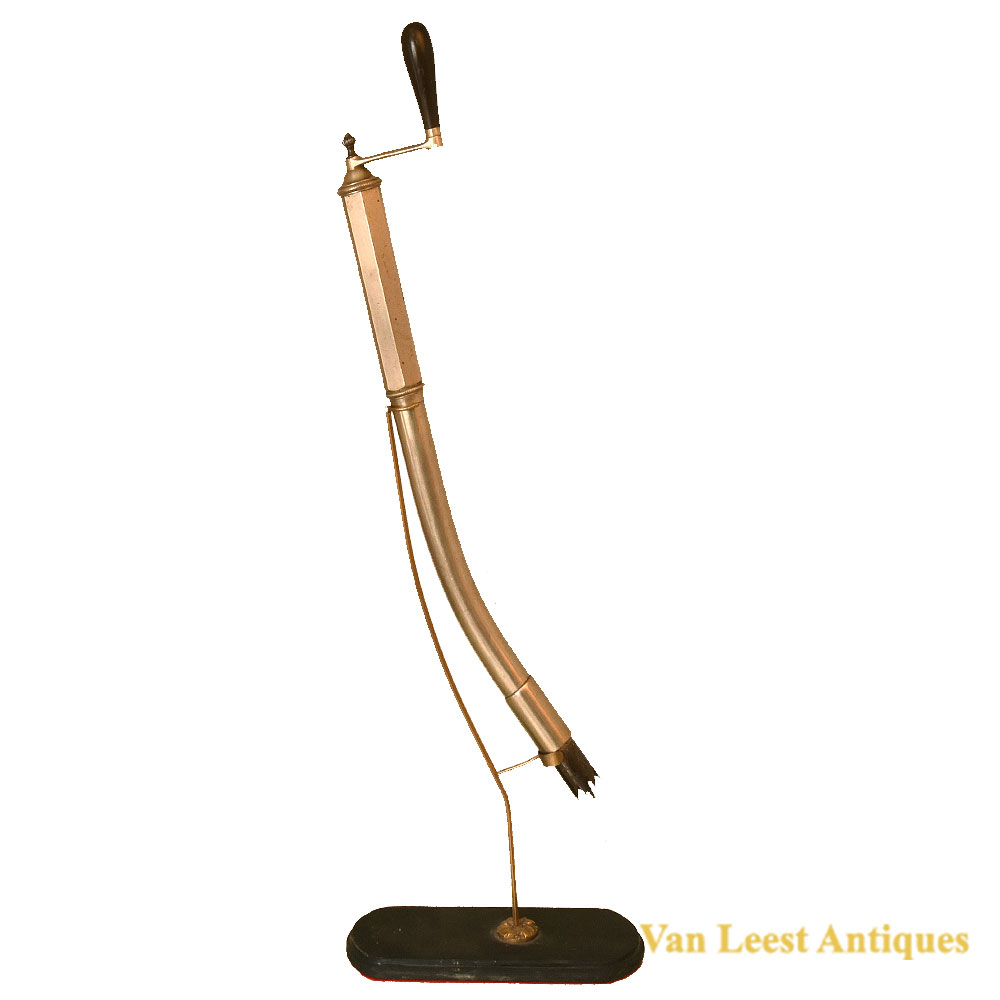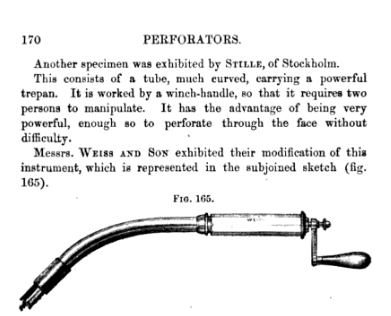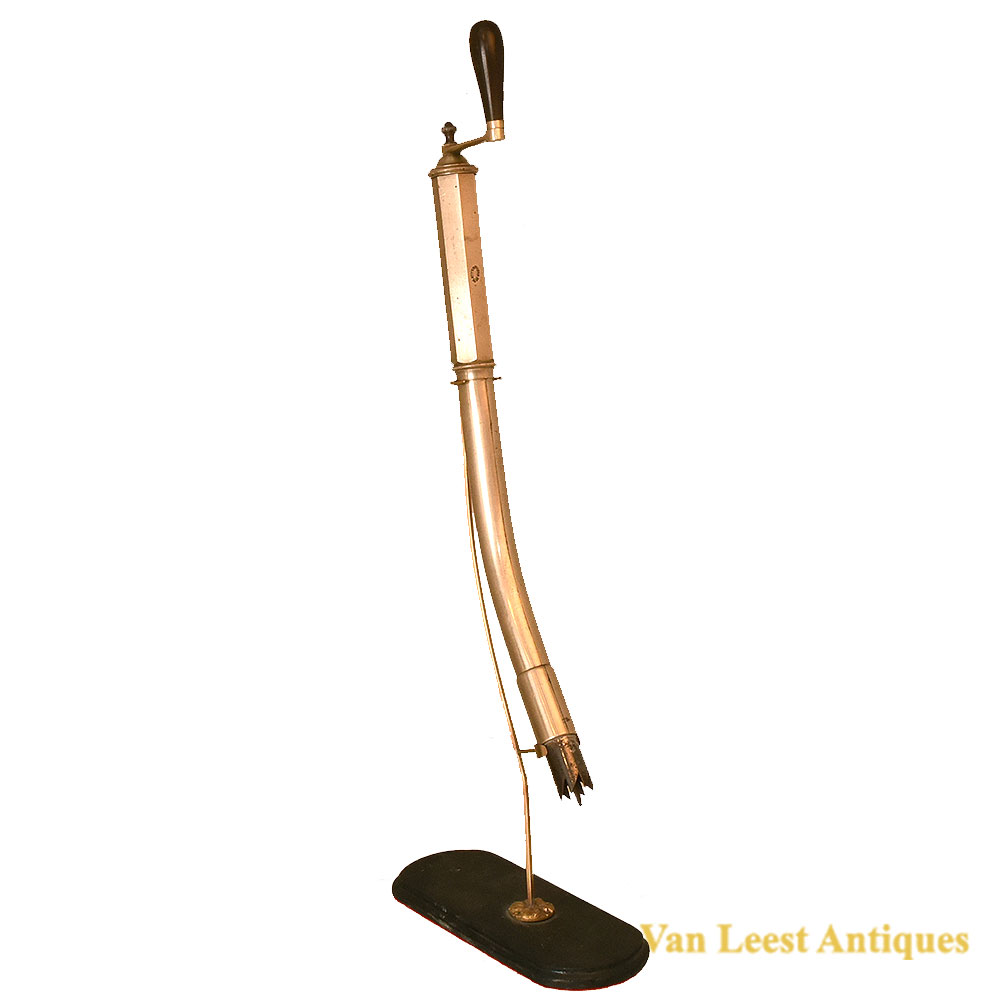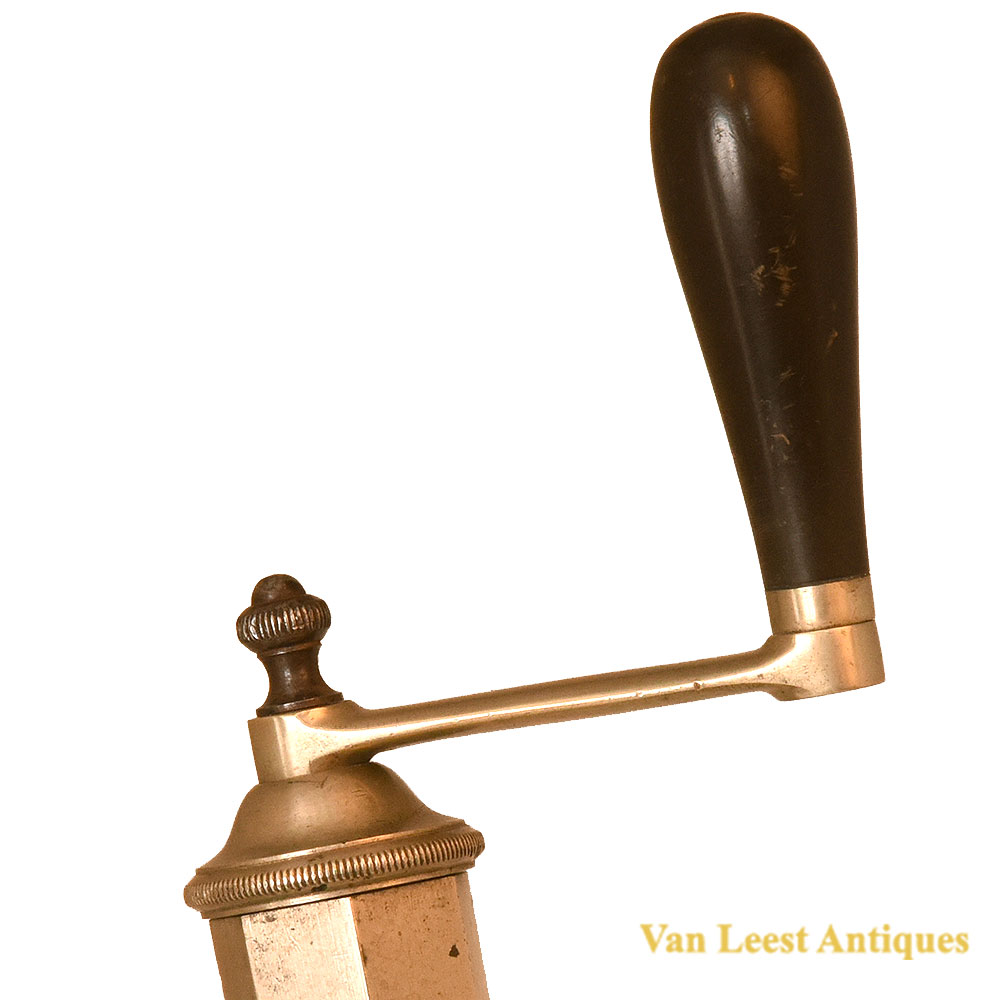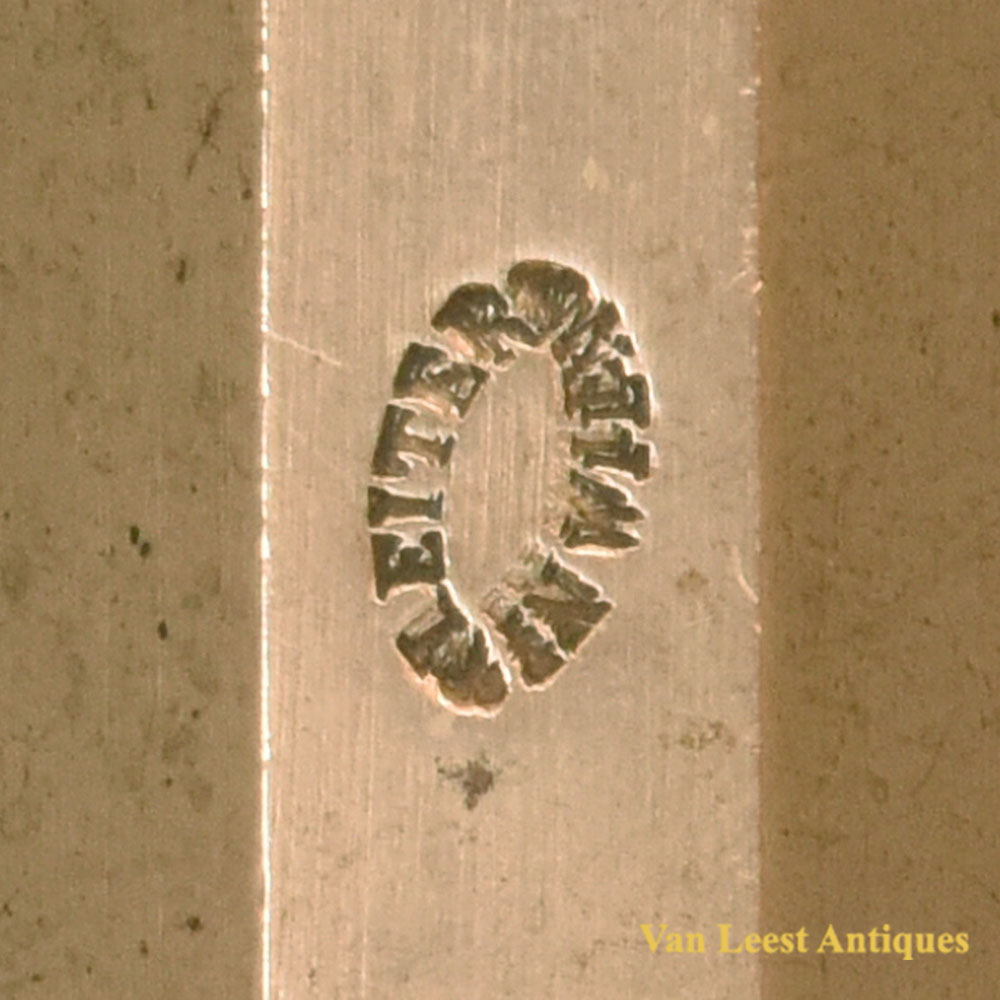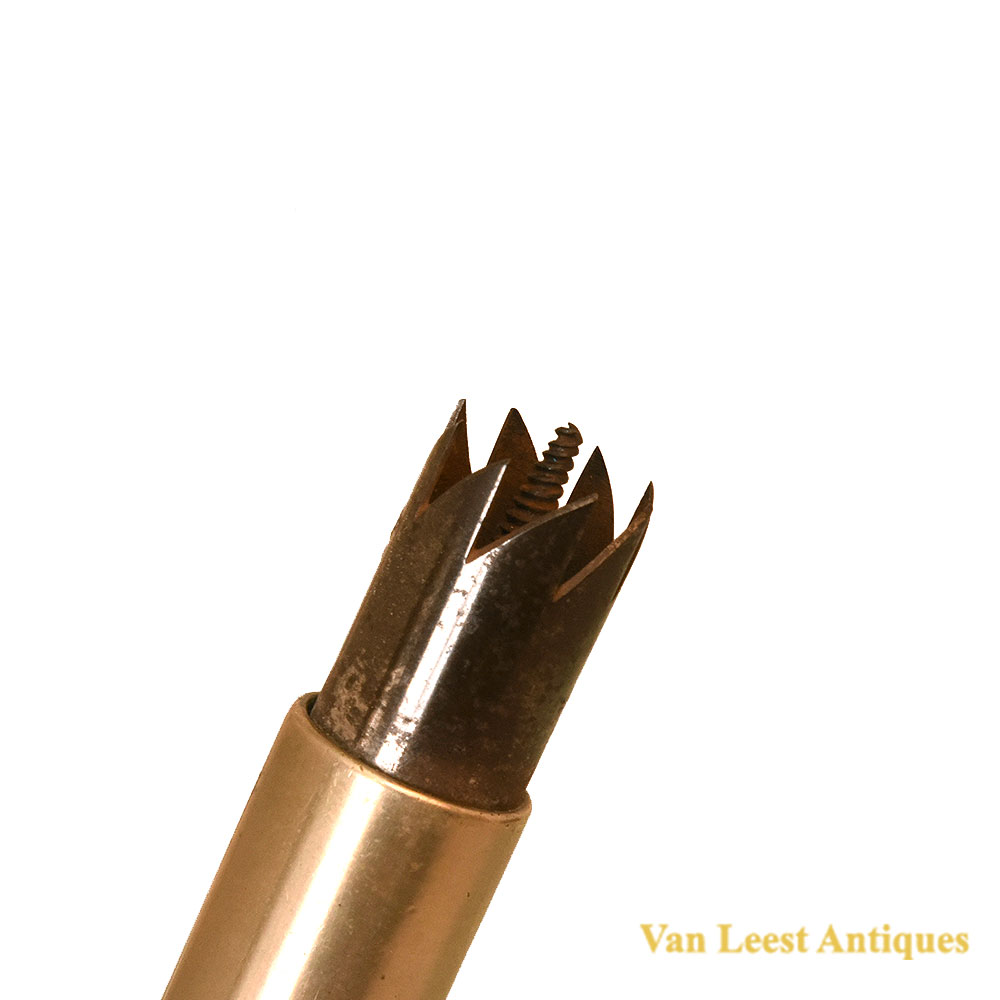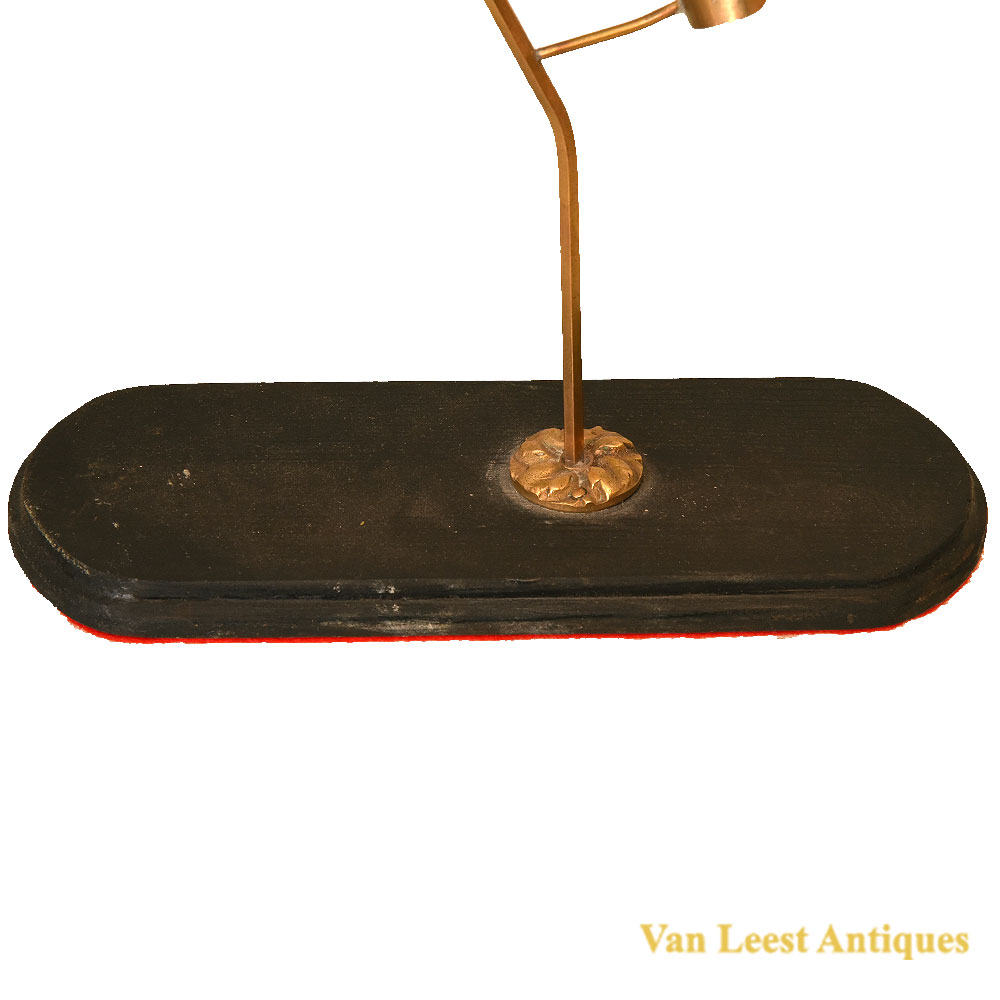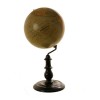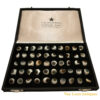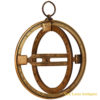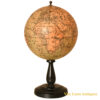Description
An obstretrical trepan-perforator by Josef Leiter (1830-1892) of Vienna of circa 1866. The instrument is made of a curved tube with a big trepan with on top a winch-handle to rotate the trepan, a similar example was exhibited in an 1866 exhibtion of instruments in London of ‘obstetrical and other instruments’.
In 1866 an exhibition of ‘obstetrical and other instruments’ was held which was organized in the Library of the Royal College of Physicians by the Obstetrical Society of London. In the catalogue it is described as an epoch in the history of Midwifery in this (England) and other countries. The exhibition had an international character and had the aim and purpose of ‘bringing together the instruments that have been used in different ages and in different countries for the purpose of overcoming those obstetric difficulties which are met with in all ages and all countries.’ In the exhibition the instruments were brought by each other to tell the stories about the inventors, the producers, the errors they made and the improvements and considerations of later instrument makers of which the instruments were the tangible symbols of the story.
As stated in the exhibition catalogue the form of the Trepan-perforator appears to be the most generally used in Germany. It is designed upon the model of trepany drills, which are used in surgery for taking out pieces of the cranium in eases of fracture. A trepany drill mounted on a long stem, to facilitate working in the pelvis is the representation of an obstetric trepan- perforator.
The First one to adapt an instrument like this one seems to have been (Paolo Assalini 1759 – 1840). His instrument was described in 1810, and formed one of the collection submitted by him to the Institut National de France in that year.
The trepan perforator described in the catalogue exhibition, and which one corresponds witch the one in our collection, of obstetrical instruments is a modification of the messieurs Weiss and Son of a type which had been introduced by professeur Braun. Weiss and Son replaced wooden handles for steel, which are depicted in the catalogue of Collin and Cie. ‘It consists of much curved tube which carries a powerful trepan. It works with a winch-handle an requires two persons to manipulate it. It has the advantage of being very powerful, enough so to perforate through the face without difficulty’. Our specimen is signed ‘Leiter in Wien’ and follows the description of the 1866 catalogue.
The full story of the Trepan-Perforator is readable on page 169 and further.
About the instrument maker Josef Leiter
Josef Leiter (1830-1892) was an chirurgical instrument maker based in Vienna. He gained his experience from an internship in instrument making. He toured through Europe through Belgium, England and France where he learned from and worked with famous instrument makers such as Joseph Fréderice Charrière (1803-1876) and Georges-Guillaume-Amatus Lüer.
After working in several businesses in Vienna he opened his own firm in 1855, which would grow to an internationally fame. In 1866 he opened his own factory, where he would also build electrical devices. Leiter is best known for contributions to cystoscopy. Together with Maximilian Nitze (1848-1906) he introduced an improved the practicable of cystoscopy. It changed the possibilities to look inside the body drastically.
Height on stand: 46 cm.
Find out more on www.vanleestantiques.com
Ask the Dealer
Dealer information
 Van Leest Antiques
Van Leest Antiques
Van Leest Antiques
Van Leest Antiques, based in Utrecht in the Netherlands, specialises in antique scientific and medical instruments. Their collection covers mainly scientific and medical antique instruments: barometers, globes and planataria, nautical instruments, anatomical models, and pharmacy items. Toon Van Leest travels regularly in Europe and visits trade fairs, auctions, and antique dealers to collect stock and to find pieces to fulfil his clients' unusual requests.
As well as being an avid antique collector and dealer, Toon Van Leest is also a dentist. He believes that antiques are a stable investment, not reliant on trends or fashion, and have truly lasting value. Above all, he says, antiques are timeless and never lose their beauty.




